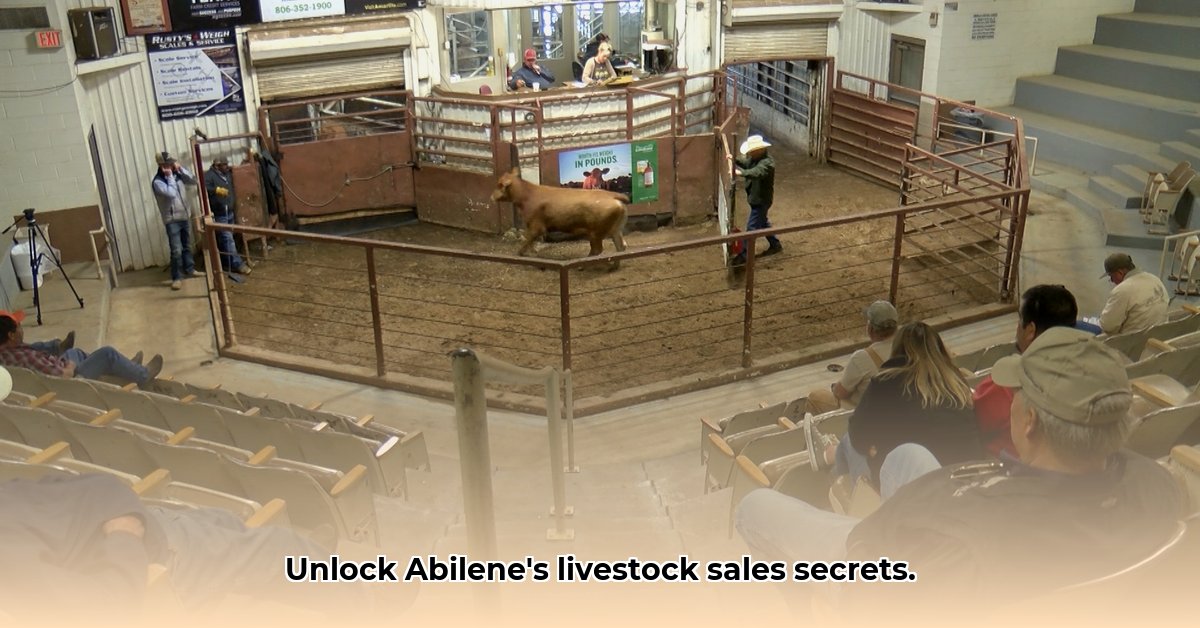
Abilene Livestock Auction: A Comprehensive Overview and Roadmap for Growth
The Abilene Livestock Auction (ALA) serves as a critical link in the Texas livestock market, connecting ranchers and buyers across a wide geographical area. This article analyzes ALA's current operations and proposes a strategic plan to enhance efficiency, sustainability, and overall sales. While precise operational data is limited, this analysis focuses on actionable improvements based on best practices within the agricultural sector. How can we optimize ALA's performance and ensure its continued success in a dynamic market?
Current Operations and Opportunities for Improvement
ALA's current operations lack detailed public information regarding specific sales volumes, species handled, and frequency. This limits a precise quantitative analysis. However, its multiple locations suggest a broad geographical reach within Texas. The auction's success hinges on its ability to efficiently connect producers with buyers, and this process is ripe for technological upgrades and collaborative improvements. One key area for improvement, crucial for today's successful agricultural operations, is the lack of comprehensive data collection and analysis.
Leveraging Technology for Enhanced Efficiency
The integration of technology offers significant potential for improving ALA's efficiency and appeal to a broader market. Imagine the impact of a user-friendly website offering online bidding, detailed livestock information (including high-quality photos and videos), and real-time market updates. What could be the increase in participation and sales with this digital transformation?
Short-Term Improvements (Within 1 Year):
Develop a basic website: Include contact information, sale schedules, and basic livestock details. This establishes a vital online presence.
Implement SMS communication: Text message alerts for sale dates and updates will improve communication and engagement with buyers and sellers.
Enhance visual marketing:Showcase livestock with high-quality photos and videos. This increased visual appeal can significantly impact buyer interest.
Long-Term Improvements (3-5 Years):
Implement a full-featured online platform: This includes online bidding functionality, detailed sales data, market analysis tools, and integrated payment systems. This will prove an invaluable investment in the future of the auction.
Foster collaborative transportation: Encourage ranchers to coordinate transportation to reduce costs and environmental impact. Collaborative logistics can generate significant savings while improving ALA's environmental footprint.
Develop data-driven insights: Gather and analyze sales data to provide actionable market intelligence for buyers, leading to more informed decisions.
Strategic Collaboration and Sustainable Practices
ALA's multiple locations, while beneficial for outreach, also incur higher transportation costs. Collaborative transportation initiatives among ranchers can address this. This not only reduces the overall cost for ranchers but also presents a compelling environmental advantage. Promoting sustainable practices, such as the coordinated transportation mentioned above, is vital to the long-term success and sustainability of the auction. How can we attract a broader, more environmentally conscious clientele?
Risk Assessment and Mitigation
Implementing these changes introduces several potential risks that must be proactively addressed.
| Risk Category | Potential Problems | Mitigation Strategies |
|---|---|---|
| Technology | System crashes, security breaches | Robust security measures, regular backups, disaster recovery plan, and thorough vendor vetting. |
| Finances | High initial investment costs | Phased implementation, exploration of funding options, and detailed budgeting. |
| Legal and Regulations | Non-compliance with relevant regulations | Regular legal review, proactive monitoring of updates, and building compliant processes. |
| Resistance to Change | Resistance to new technologies from stakeholders | Thorough education and engagement of all stakeholders, highlighting the considerable benefits. |
Regulatory Compliance
ALA must adhere to all applicable regulations concerning animal welfare, environmental protection, and data privacy. Maintaining compliance is crucial for the auction's continued operation and reputation. Active monitoring of regulatory changes and proactive adaptation to new legal requirements is essential.
Conclusion: A Path Towards Growth and Sustainability
By strategically adopting technology, fostering collaboration, and prioritizing sustainable practices, ALA can significantly improve efficiency, expand its reach, and boost overall sales. This multifaceted approach requires careful planning, diligent resource allocation, and a commitment to ongoing improvement. The future of Abilene Livestock Auction is bright, with a properly executed strategy designed to lead to long-term success and growth within the evolving agricultural landscape.